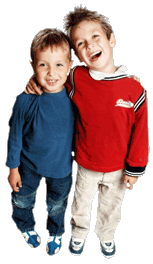There are two broad categories of treehouse beds. The first concerns the types of beds that can safely be put in treehouses, which often must minimize weight. More commonly, treehouse beds are indoor loft beds that take the form of raised house-like structures. This design creates a space underneath the bed for play and also covers the bed area, which many people find enjoyable. Although most treehouse beds are designed for children, adult versions of this design can be found as well.
Treehouse beds that will be placed in treehouses are usually simply normal beds with lightweight designs. It is important for these beds to adhere to any weight constraints related to the treehouse and also to maintain safety if the area is high above the ground without walls. Some people find that hammocks are better suited to treehouses, and hanging the bed can be a good solution to spreading out weight.

Indoor treehouse beds come in many different designs and usually feature color schemes and decorations that make the bed look more like a treehouse. The basic design involves creating a raised platform, which is often accomplished with four long legs like other loft beds. Some designs use a pedestal or column painted like a tree, but this is often not as sturdy as using four legs. Safety with this type of bed is very important, because children often play both in and under the bed.
The area in which people sleep is usually designed to look like a house, which typically involves walls, a roof, and small windows. To enter the sleeping area, a person must usually climb a ladder or stairs of some sort. Some beds of this type also may include slides to create an indoor play structure. In some cases, the covered space in which the mattress is contained may be larger than the mattress itself, creating a lofted play area, which can be desirable in small spaces. This may also make it difficult to differentiate between play areas and sleep areas, which reduces sleep hygiene for the child, so many designs limit the bed space to the precise size of the mattress.
Most of the differences between treehouse beds are aesthetic, and different paint themes can create very different-looking beds. Some beds of this type include wood patterns or even leaves to make the bed look more like it belongs in a tree. Others simply focus on matching the decor in the room. It is possible to find treehouse beds in many different color schemes, but it is also possible to paint these furniture items somewhat easily because they are often made of wood.
